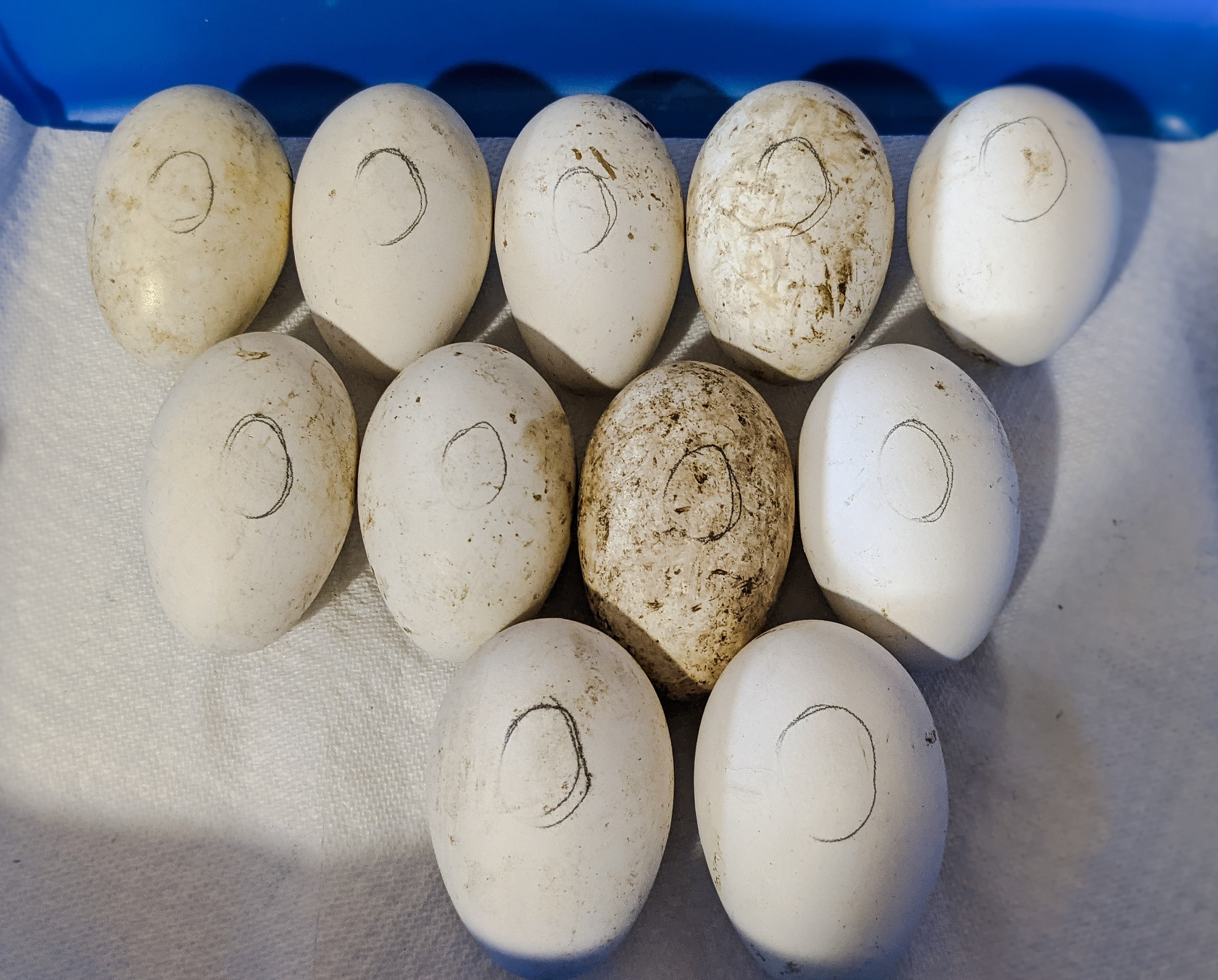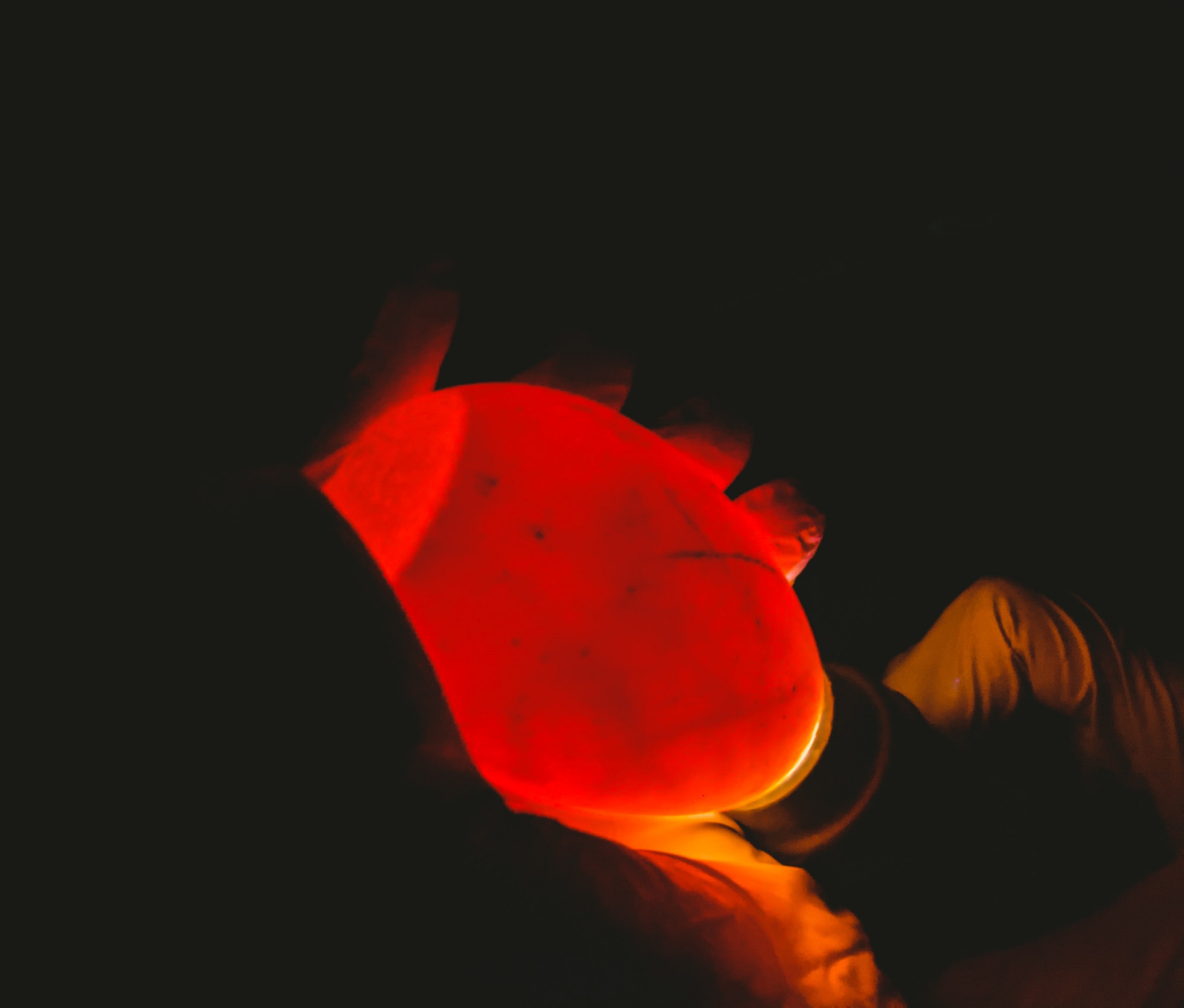
It’s the second candling, roughly halfway through the incubation period. There’s good news and bad news, but overall, it’s looking very good.
During this candling, each egg was carefully checked and weighed. I normally assess whether the humidity is appropriate throughout incubation by how large the air cell grows and making adjustments along the way, as needed; this time, though, I actually remembered to weigh the eggs before I put them into the incubator. Each weight was recorded and I (later) input the data in a spreadsheet I’ve created that will tell me how close to the “goal” percentage of overall weight loss they’ve reached (the goal being roughly 13%).

The eggs were all showing continued development until the very last egg, which was the first one laid (and thus the oldest one set). Egg #1, sadly, contained the clear indications of an “early quitter”: an embryo that begins developing but ceases at some point early in the incubation. There are a number of factors that could have been responsible, but I like to think that maybe it just wasn’t meant to hatch, so Nature took its course.
The first clue that something was amiss with egg #1 was the blood ring – a dark ring that forms around the inside of the egg. A blood ring is often a telltale sign that the embryo has died and the blood vessels have begun to break down. To erase any doubt, I also checked to see if there were active blood vessels around the embryo, and there weren’t – they were also dark and, especially when compared to the developing eggs, it was obvious that decomposition had begun. Finally, the embryo itself, instead of being a glowing reddish mass in the egg like the others, was a black, unmoving shadow. It was unmistakable: no life there. Knowing it was gone, I pulled the egg from the incubator.
As disappointing as the loss was, I still had 11 live embryos growing and wiggling (one clearly wasn’t happy with the bright light of the candler shining on it), reminding me of tiny seahorses as they undulate on their tethers. Movement is good!
When I reviewed the weight loss progress, I was a bit surprised at the disparity between some of the eggs – one was a bit ahead of where I’d expect, but most were a little behind where they should be, so I’ll be reducing the humidity in the hopes that they’ll lose more moisture before the next candling. I continue to mist and cool the eggs daily, which should also help with moisture loss. I enjoy how “high touch” the gosling incubation process is…I feel like I get to know them before they even hatch.
There’s now about two more weeks to go before they emerge. With luck, there will be no more losses, and their air cells will large enough to facilitate successful hatching. I’ll do a final candling at week three; shortly thereafter, the eggs will go into lockdown to prepare for hatch. If there’s a species that teaches patience when it comes to hatching, it’s geese – sometimes a hatch can take up to two days from start to finish, but when those goofy hatchlings are safely out of the egg, all the effort (and anxiety!) will be worthwhile. Stay tuned for another update on this gosling hatch!
Interested in how a goose embryo develops during incubation? Check out this photographic guide ⚠️WARNING! Photos are graphic.

One thought on “Incubation Update: Pilgrim Goose Eggs – Second Candling”
Comments are closed.